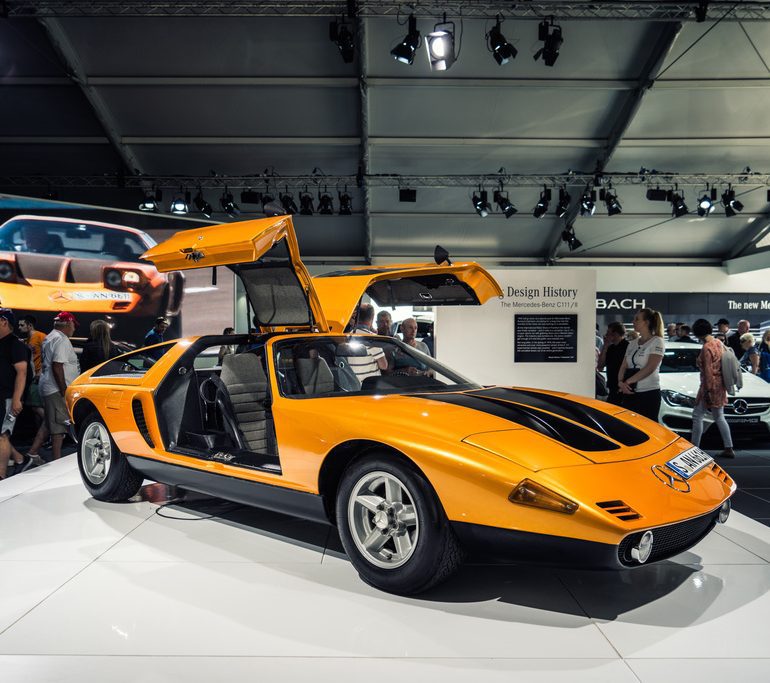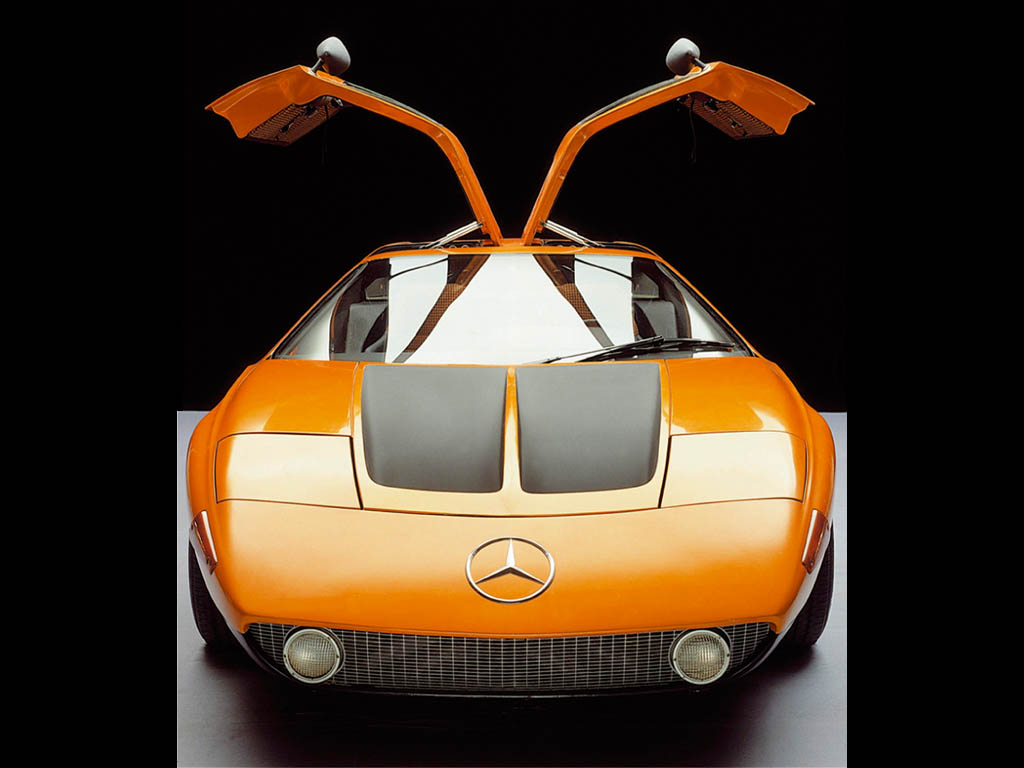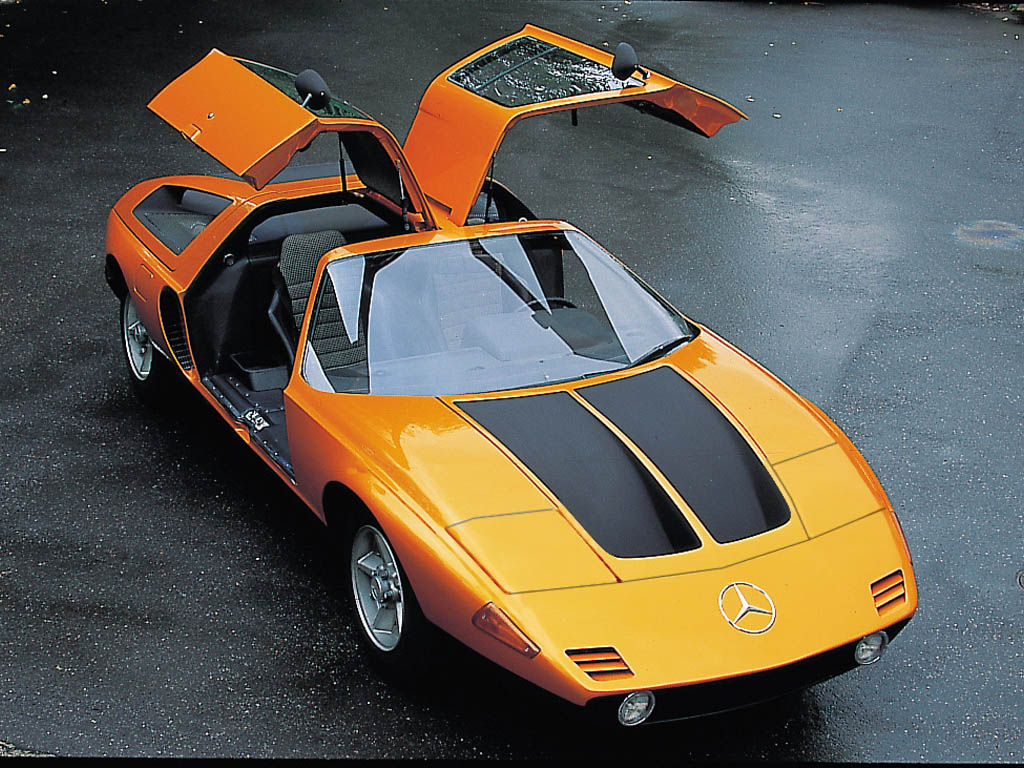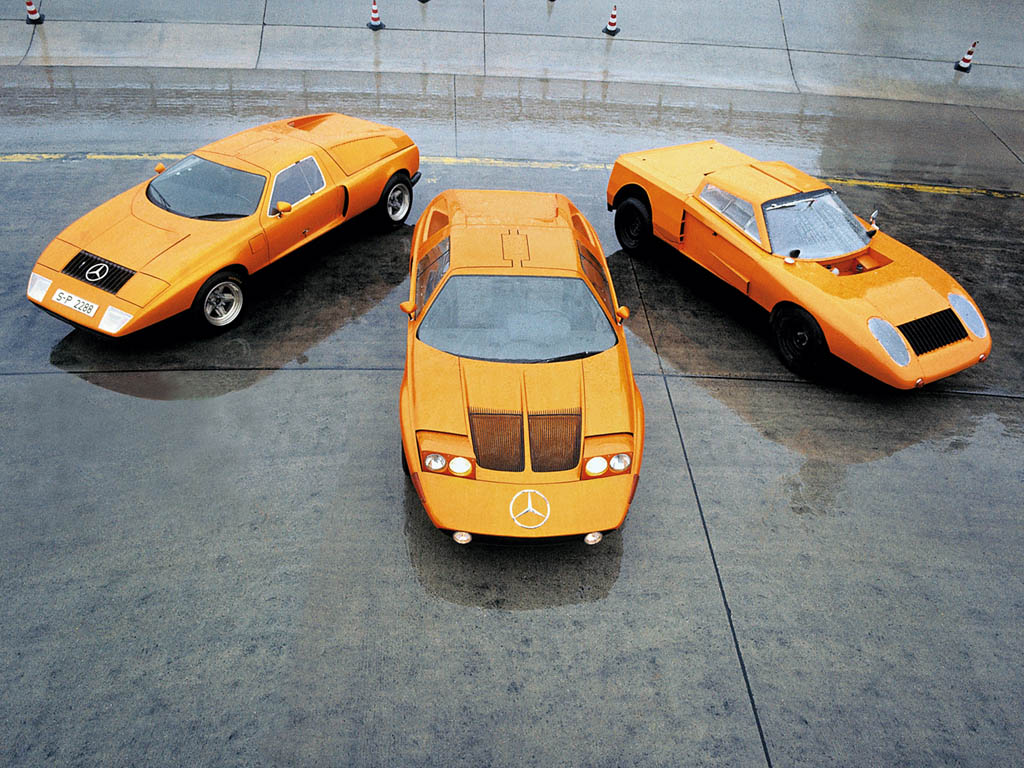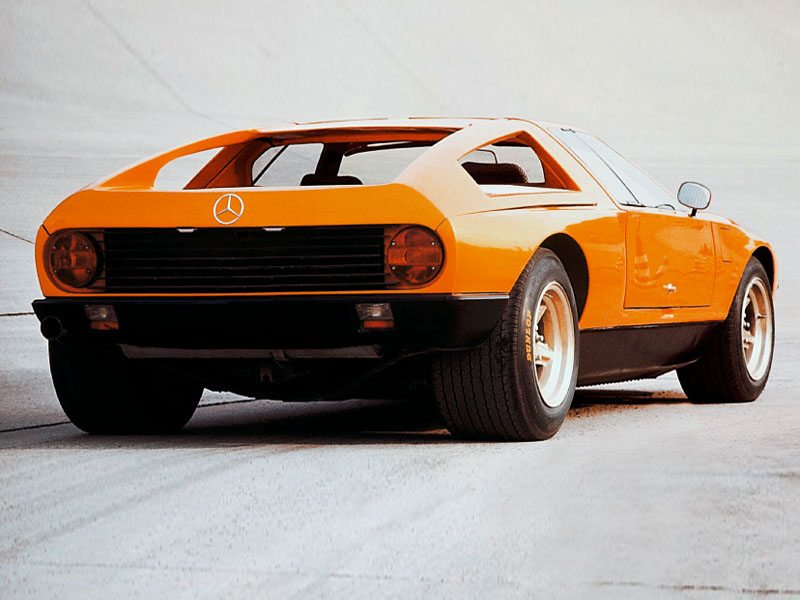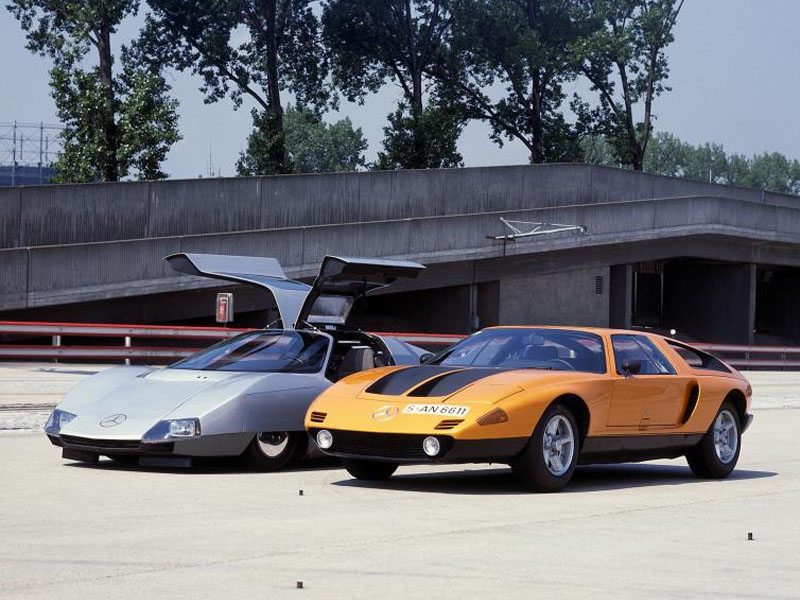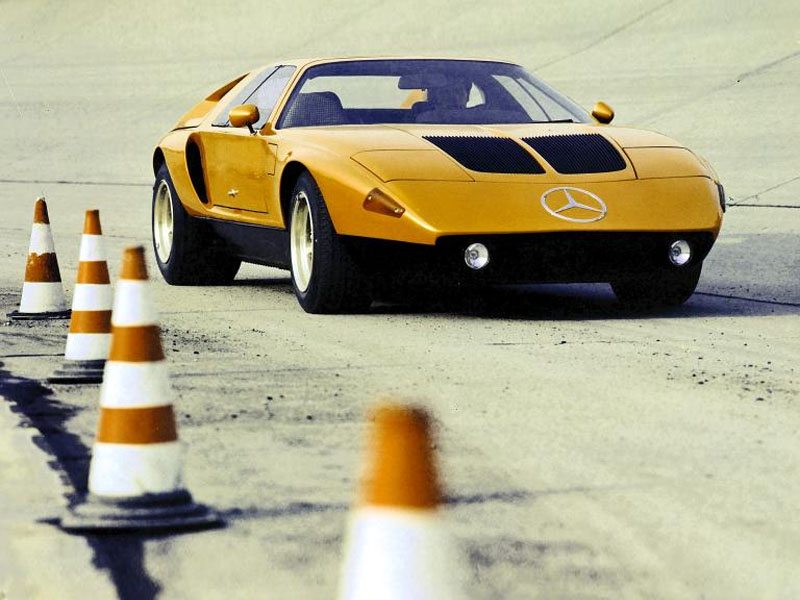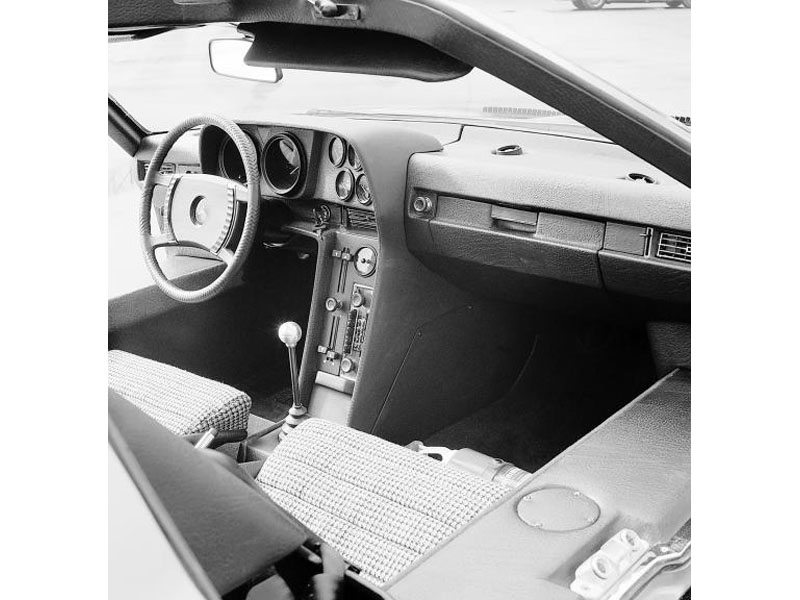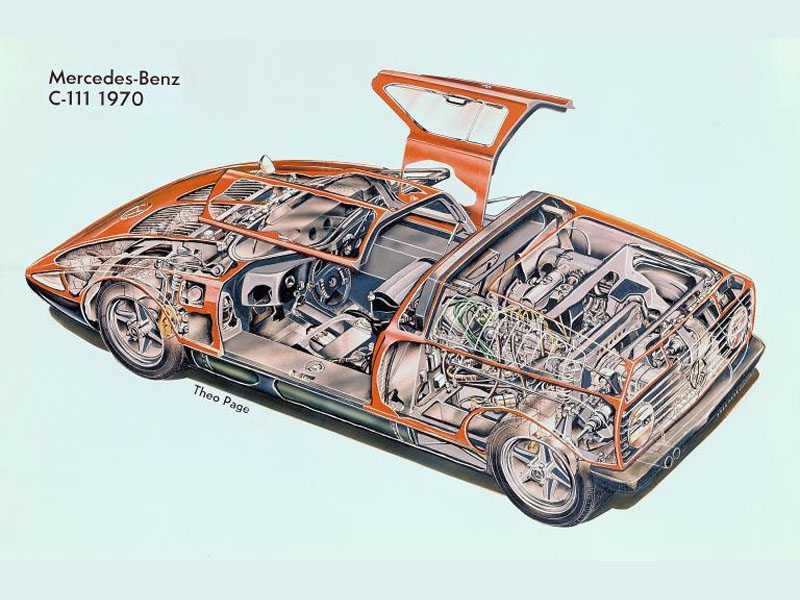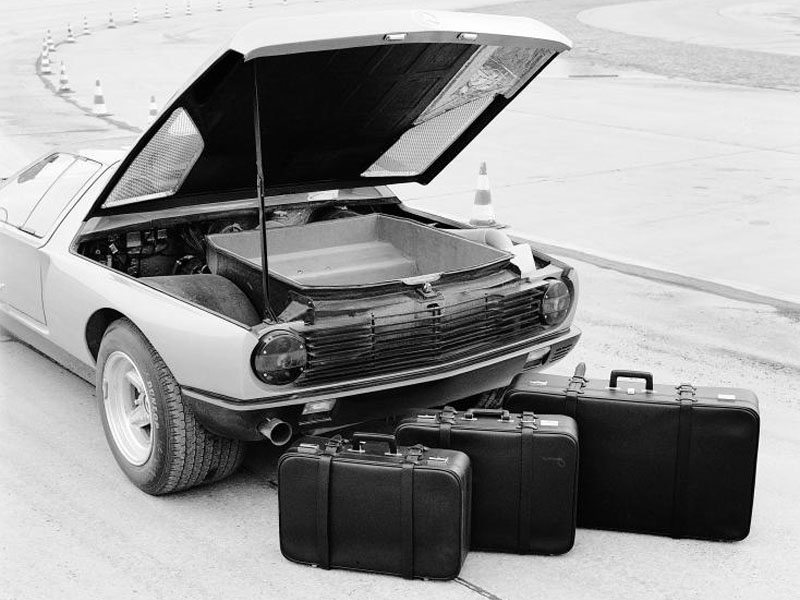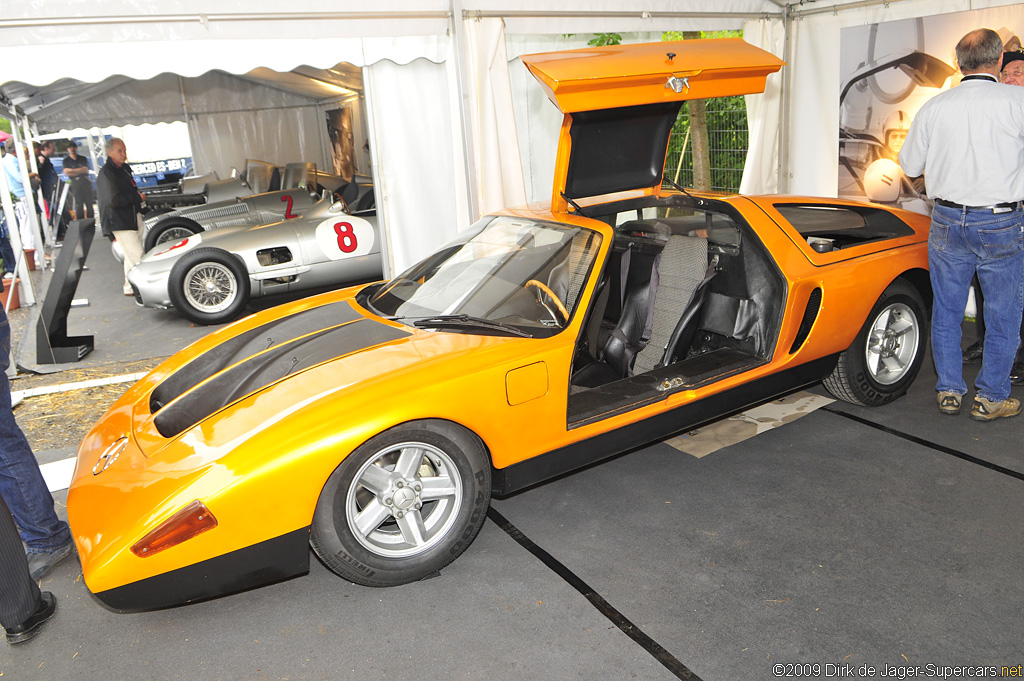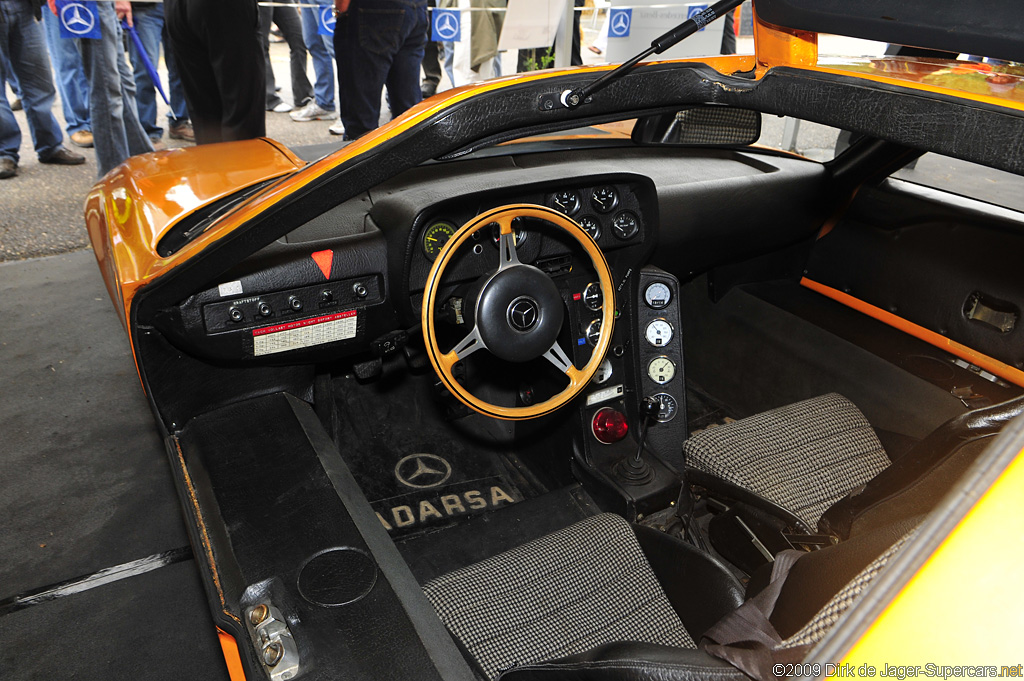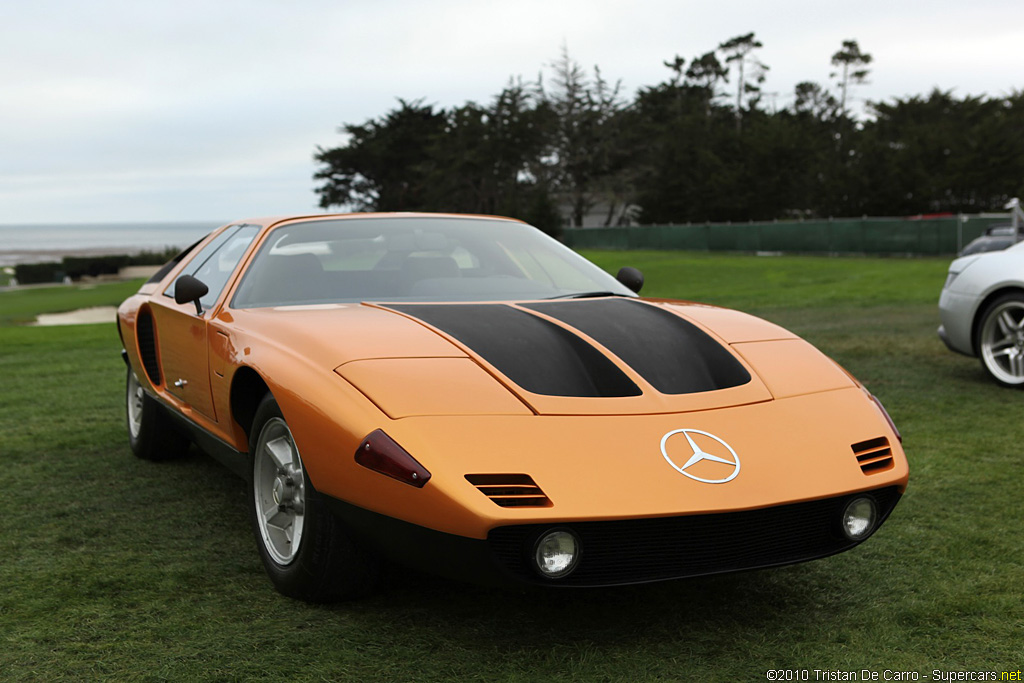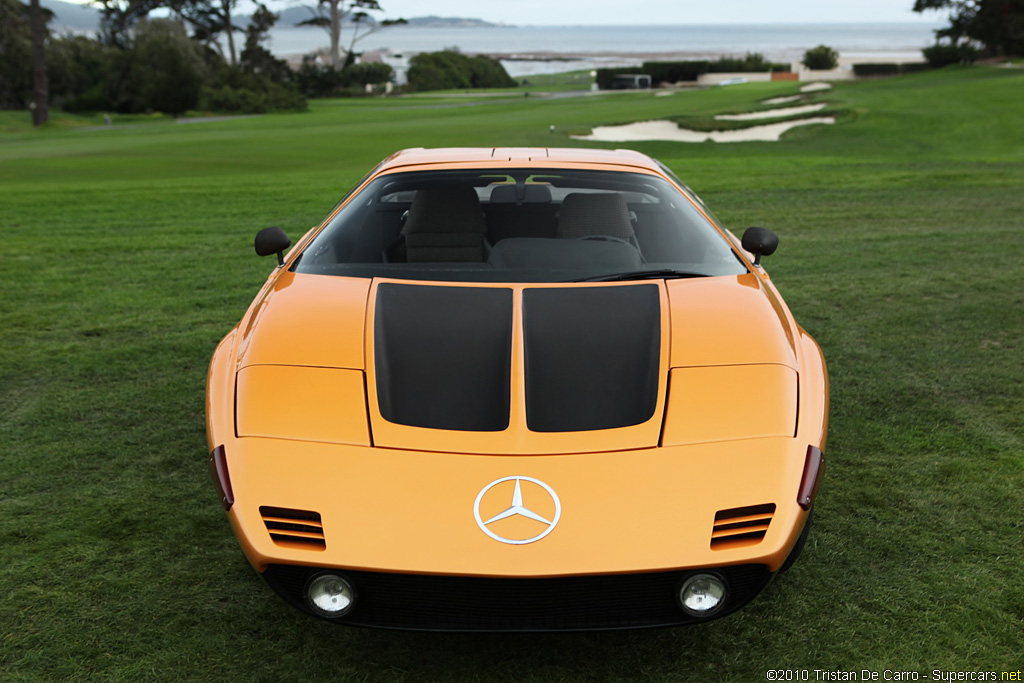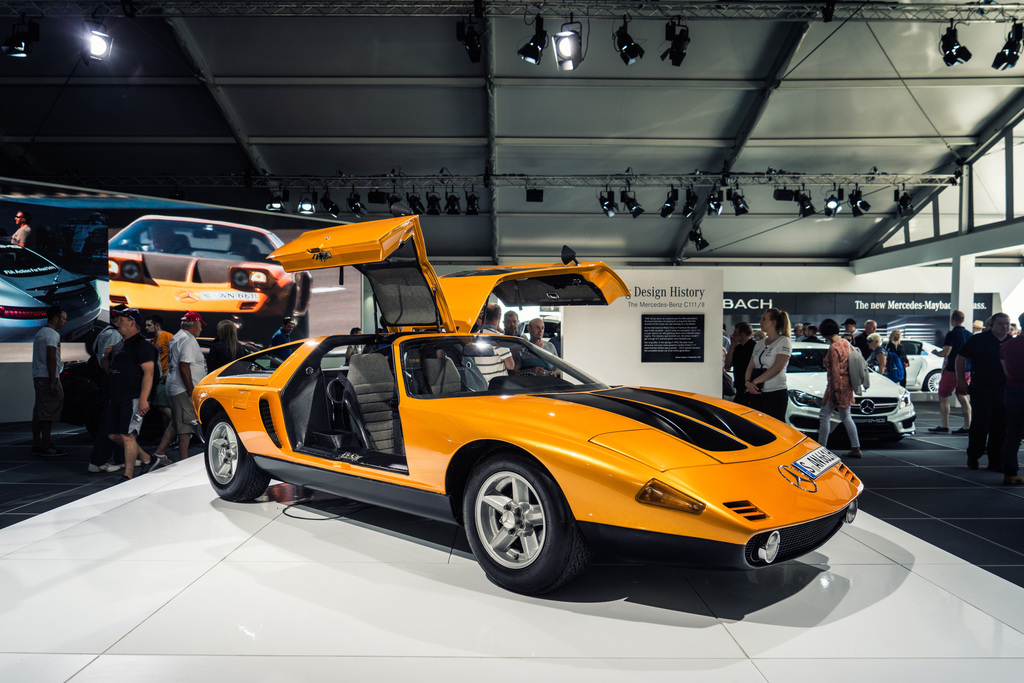1969 Mercedes-Benz C111-II
C 111 was the designation of the futuristic study displayed by Mercedes-Benz in September 1969 at the Frankfurt International Motor Show (IAA). The car broke new ground in terms of both engineering and design. In the spring of 1970, an even more elegantly clad C 111-II made its appearance at the Geneva Motor Show.
Neither the C111-II or C 111 did not to appear in showrooms despite their lavish interior and cargo space. The coupes may have looked production worthy, but complex technologies embedded within in the cars kept them as experimental cars. However, the research in testing Wankel engines, new suspension components and plastic bodywork components contributed to future Mercedes-Benz products.
The three-rotor Wankel engine in the first C 111 of 1969 developed 206 kW/ 280 hp, giving the car a top speed of around 260 km/h. The suspension featured anti-squat and anti-dive control; its front axle components were incorporated in large-scale production at a later stage and the rear axle was a precursor of today’s multi-link independent rear suspension. On the basis of the experience gained in testing this car, another five experimental cars were built.
C111-II
Only five months after the Frankfurt show, an experimental car designated C 111-II was fitted with a four-rotor Wankel engine with an output of 258 kW/350 hp: it gave the car a top speed of 300 km/h and accelerated it from standstill to 100 km/h in 4.8 seconds. Compared to the C111-I, this version had a bodywork that had been improved significantly in terms of vision for the driver as well as aerodynamic efficiency – the Cd was 0.325, not bad at the time. The most important aspects, however, were the clearly improved flexibility of the Wankel engine and its torque raised to 40 mkg; this meant that very few contemporary road-going cars would have been a match for the C 111-II.
The company introduced that car to the broad public at the Geneva Motor Show in March 1970. Like the first version, it immediately became an object of desire for all those fans of the brand who were longing for a spectacular successor to the 300 SL Gullwing coupe. But hopes were destroyed by ever more stringent emission legislation in a large number of countries and finally by the 1973 oil crisis, because the pollutant emissions of Wankel engines were difficult to reduce, and they also had a relatively high fuel consumption – far from meeting the demands of the time.
Subsequent versions of the C111 project were powered by a diesel engine. Mercedes-Benz successfully showcased their prowess by breaking many world record with diesel powered C111s.
Story by Mercedes-Benz and Supercars.net
In Detail
| submitted by | Richard Owen |
| production | 6 |
| engine | M 950 F Four-Rotor Wankel |
| position | Front |
| aspiration | Natural |
| fuel feed | Direct Injection, Mechanically Controlled |
| displacement | 1800 cc / 109.8 in³ |
| compression | 9.3:1 |
| power | 261.0 kw / 350 bhp @ 7000 rpm |
| specific output | 194.44 bhp per litre |
| bhp/weight | 282.26 bhp per tonne |
| torque | 391.83 nm / 289 ft lbs @ 4000-55000 rpm |
| body / frame | Fiberglass Reinforced Plastic Body over Sheet Steel Chassis |
| driven wheels | RWD |
| front tires | 4.50/11.60-15 |
| rear tires | 5.50/13.60-15 |
| front brakes | Internally Ventilated Discs w/Vacuum Assist |
| f brake size | mm / in |
| rear brakes | Internally Ventilated Discs w/Vacuum Assist |
| r brake size | mm / in |
| steering | Recirculating Ball |
| f suspension | Double Wishbones w/Torsion Bar, Spring Struts |
| r suspension | Tripple Wishbones w/Torsion Bar, Spring Struts |
| curb weight | 1240 kg / 2734 lbs |
| wheelbase | 2620 mm / 103.1 in |
| front track | 1410 mm / 55.5 in |
| rear track | 1405 mm / 55.3 in |
| length | 4440 mm / 174.8 in |
| width | 1800 mm / 70.9 in |
| height | 1120 mm / 44.1 in |
| transmission | 5-Speed ZF 5 DS-25/1 Transaxle |
| gear ratios | :1 |
| final drive | 3.166:1 |
| top speed | ~300 kph / 186.4 mph |
| 0 – 60 mph | ~4.7 seconds |


